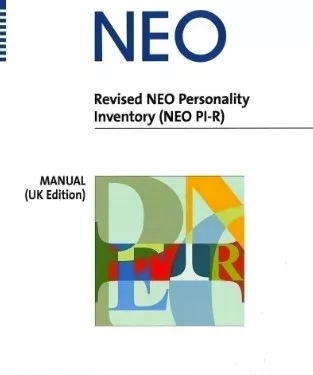
NEO (UK)
NEO Personality Inventory (Revised UK)
Hogrefe (UK) Ltd commissioned John Rust to anglicise and standardise one of the world’s leading personality tests, the NEO PI-R, for use in the UK. This test is the most widely used measure of the big-five personality factors globally. UK organisations have increasingly adopted this test due to its ease of use and superb technical characteristics. However, some of the items were rather ‘American’ and there had been a pressing need for UK norms. Several companies and organisations, both public and private sector, assisted us with this important project. The NEO is published by Hogrefe (UK).
Click to contact the publisher
The NEO PI-R, the gold-standard questionnaire measure of the Five Factor Model (FFM), also known as the Big Five, provides a detailed personality description that can be a valuable resource for a variety of professionals. It is a concise measure of the five major domains of personality, as well as the six traits or facets that define each domain. Taken together, the five domain scales and 30 facet scales, including the scales for the Agreeableness and the Conscientiousness domains, facilitate acomprehensive and detailed assessment of normal adult personality. Published by Hogrefe, who also publish the BIP.
The instrument is recognised internationally as a gold standard for personality assessment. Today, reputable developers of personality tests for the occupational market will as a matter of course publish data on the relationship of their tests with the five factor model using one form or another of the NEO as the benchmark. The total amount of recent data from high level academic journals concerning the NEO PI-R underpins its quality.
The NEO Personality Inventory, crafted by Paul Costa and Robert McCrae, is a landmark tool in personality assessment, deeply rooted in the Big Five model of personality traits. This model, which delineates five broad dimensions of personality—Neuroticism, Extraversion, Openness, Agreeableness, and Conscientiousness—was refined and validated not just by Costa and McCrae but also through the contributions of several pivotal researchers across decades.
While Costa and McCrae were instrumental in operationalizing the Big Five through their NEO inventories, the theoretical foundation owes much to the collective work of numerous psychologists. Lewis Goldberg significantly advanced the model by popularizing the term “Big Five” and championing its use in research and practical assessments. Additionally, Oliver John played a crucial role in further refining the dimensions, particularly emphasizing the robustness and utility of the Big Five in various psychological evaluations.
The development of the Big Five was also influenced by the use of meta-analyses in occupational settings. These studies synthesized vast amounts of data to explore how personality traits predict job performance and other work-related outcomes. A key publication in this area is Barrick and Mount’s 1991 meta-analytic review, which confirmed that certain traits, particularly Conscientiousness, have strong correlations with job performance across various sectors. This research not only underscored the relevance of the Big Five in occupational psychology but also helped establish personality assessments as critical tools in human resources management.
Moreover, the field has seen advancements in understanding the role of personality traits in workplace dynamics, leadership effectiveness, and team performance. The NEO PI-R, a revised version of the original inventory, has been widely used to assess these traits in organizational contexts, providing insights that aid in personnel selection, career development, and organizational planning.
The integration of the Big Five model into occupational psychology has led to more nuanced approaches to employee management and development. By leveraging the stable and predictive power of these traits, organizations can better align individual capabilities with job requirements, enhance team composition, and foster a productive work environment.
In contemporary research and practice, the contributions of Costa, McCrae, Goldberg, John, and other researchers continue to resonate. Their collective efforts have cemented the Big Five as a fundamental framework in understanding personality. This framework not only facilitates academic research but also drives practical applications that improve individual and organizational outcomes.
The NEO Personality Inventory, with its comprehensive coverage of the Big Five traits, remains a cornerstone in both psychological research and practical human resource applications. Its enduring relevance is a testament to the foundational work of its developers and the ongoing research that continues to explore and expand our understanding of personality in diverse settings.